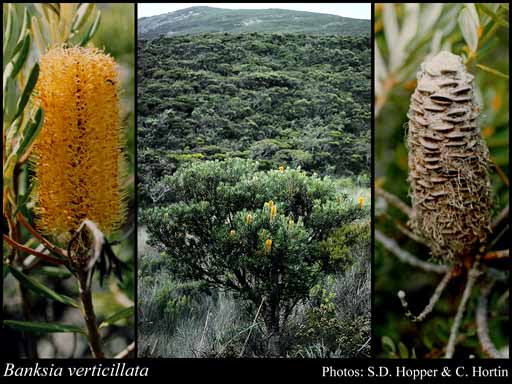- Reference
- Trans.Linn.Soc.London 10:207 (1810)
- Conservation Code
-
Threatened
A taxon name retains its ‘Threatened’ status until a new name has been officially endorsed and appears in the Gazettal Notice.
- Naturalised Status
- Native to Western Australia
- Name Status
- Current
Non-lignotuberous shrub or tree (rarely), 1.3-6 m high. Fl. yellow-orange, Jan to Apr. Sandy loam. On or beside granite outcrops.

Scientific Description
Shrubs, 2-3 m high; branchlets glabrous or hairy. Leaves petiolate, alternate or whorled, 40-85 mm long, 7-15 mm wide, hairy; petiole 5-12 mm long; lamina flat, widest around the middle, entire, the margins recurved. Inflorescences hirsute (with long, rough and coarse hairs), yellow, hairy. Perianth 19-26 mm long, hairy, all over, limb apex pubescent (with soft, straight, erect hairs), without awns; pistil 28-37 mm long, hooked, style glabrous. Follicles hairy, tomentose (with matted or tangled, soft, woolly hairs), elliptic, 11-15 mm long. Flowers in January, February, March or April. Occurs in the South-west (SW) Botanical Province(s), in the Jarrah Forest (JF), Warren (WAR) or Esperance Plains (ESP) IBRA subregion(s). : Conservation code Threatened (T).
Distribution
- IBRA Regions
- Esperance Plains, Jarrah Forest, Warren.
- IBRA Subregions
- Fitzgerald, Southern Jarrah Forest, Warren.
- IMCRA Regions
- WA South Coast.
- Local Government Areas (LGAs)
- Albany, Denmark, Manjimup, Plantagenet.